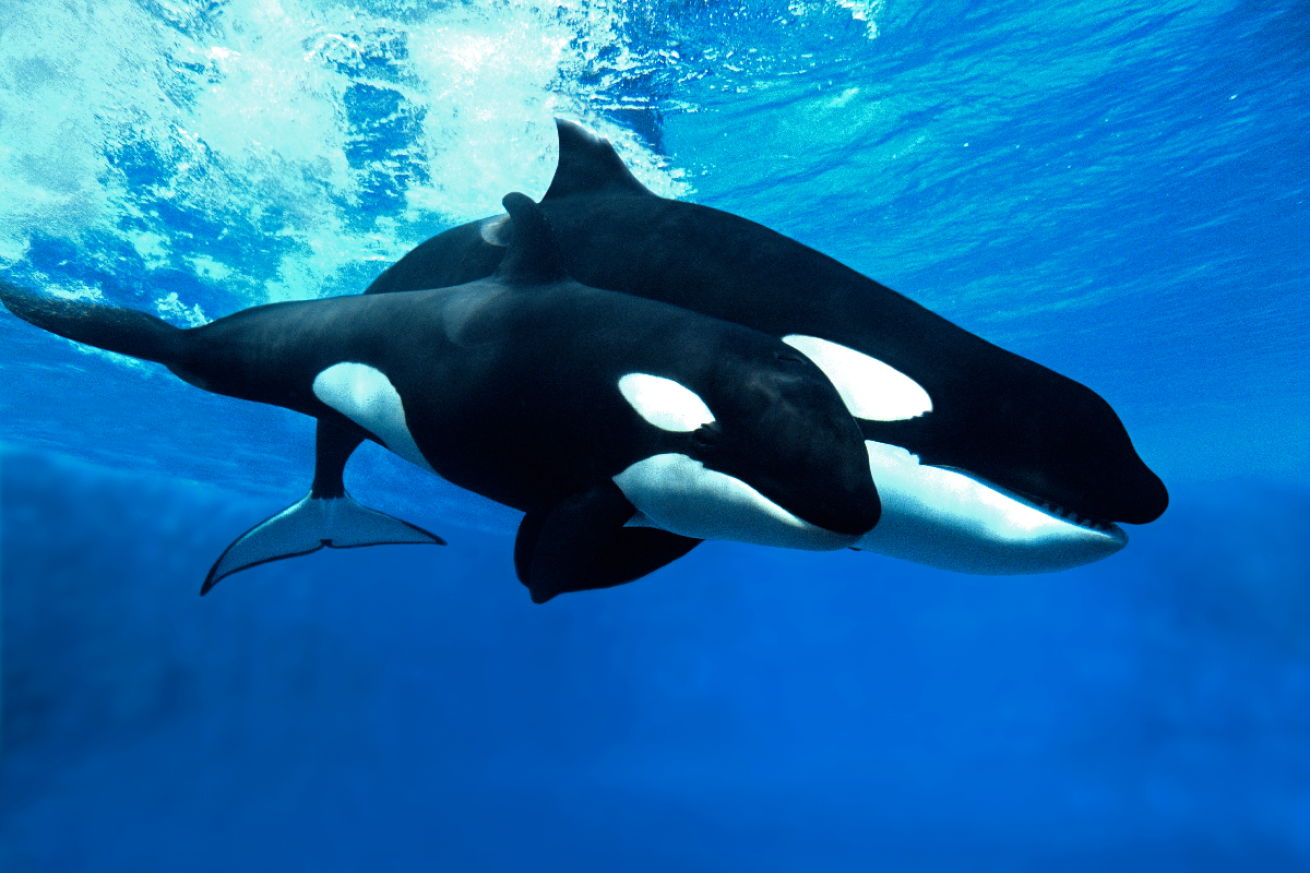Orca Moms ‘Baby’ Adult Sons and Forego Future Offspring to Care for Them

Shutterstock.com/slowmotiongliAn Orca swims alongside its calf.
Orca moms “baby” their adult sons and continue to hunt for them well into adulthood – a move that could harm endangered populations in terms of new births, research shows.
Orca (Oricinus orca) mothers are well-known in the animal kingdom for their maternal dedication. Killer whale pregnancies can last up to 18 months and usually result in a single calf. Newborns rely exclusively on their mothers’ milk for up to two years, and afterwards, orca moms hunt for their offspring and provide food until the babies learn to hunt themselves. This intense parenting means orca moms usually only calf every five years.
A new study published in the journal "Current Biology" adds nuance to this, finding that orca mothers continue to care for adult sons into adulthood to guarantee the latter’s success. Researchers found that the marine moms do so even though it reduces their own reproductive output; the moms forgo having more young to continue to dote on their existing “burnout” sons, "LiveScience" reported.
"Males are quite a bit bigger than females, so they need more calories and are also a little less maneuverable, so they may have less luck catching fish," says first author Michael N. Weiss of the Center for Whale Research, reported "EurekAlert!". “We’ve known for over a decade that adult male killer whales relied on their mothers to keep them alive, but it had never been clear whether mothers pay a cost to do so.”
Weiss’ new study shows that they clearly do. The team studied the 73 resident orcas that make up the “southern resident” population of killer whales that live off the coasts of Washington state and British Columbia. Since 1976, researchers at the Center for Whale Research have monitored this specific orca population and noticed their “bizarre social system” wherein moms continue to hunt for their adult sons, the news report said. The data analysis showed a strong negative correlation between females’ number of surviving, weaned sons and their annual probability of producing a viable calf, the news report found.
Sons also don’t become less costly as they grow older.
Furthermore, southern resident killer whale moms’ “costly lifetime maternal investment” – in the words of the original study – is exclusively reserved for their sons; daughters are cut off entirely from prey sharing by their moms once they reach sexual maturity – typically between 6 and 10 years of age, the study found.
So, why do orca moms continue to favor male offspring? It might be an evolutionary cost/benefit analysis, researchers think. When daughters reproduce, their calf stays in the pod – meaning another mouth to feed. Sons’ offspring are usually born into different groups, Weiss explains. He adds, "You get the same benefits in terms of evolution, with your genes being passed on to the next generation, without the cost of having another mouth to feed." This benefit could be enough to outweigh the large cost of rearing adult males, Weiss explained.
Nevertheless, this coddling could cost orca populations in the long run. The southern resident killer whales are critically endangered. Low reproductive rates and lack of prey are primary concerns. Weiss’ team suspects that orca moms may not be eating enough themselves to keep sharing food with their full-grown sons. Therefore, this mother-son dependency and bond could have dire implications for the survival of reproductive individuals as well as of the entire population.
“The magnitude of the cost that females take on to care for their weaned sons was really surprising,” Weiss says. “While there’s some uncertainty, our best estimate is that each additional surviving son cuts a female’s chances of having a new calf in a given year by more than 50 percent. This is a huge cost to taking care of [adult] sons!”










